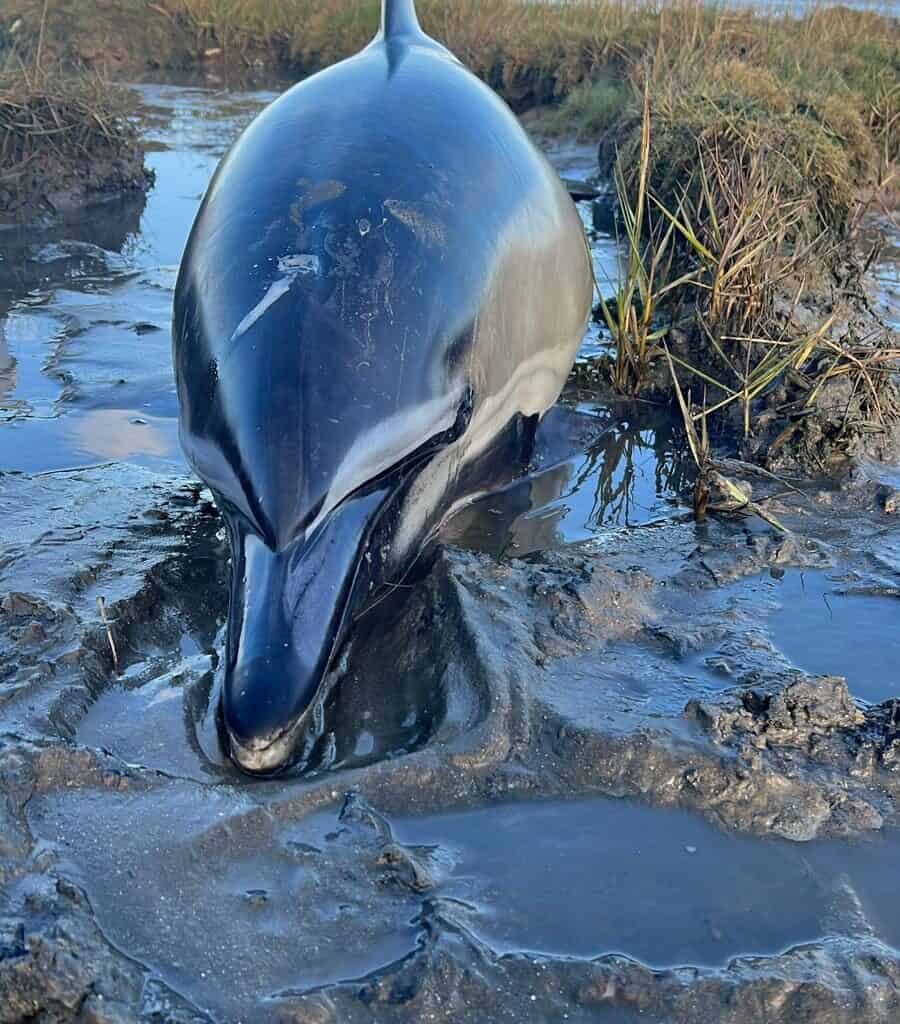
On Wednesday, 21 December BDMLR received a call alerting us to a stranded porpoise in Anglesey, which was later determined to be a common dolphin. Well-meaning members of the public attempted to refloat the animal and crowds had started to appear. BDMLR advised against trying to refloat the animal without trained Medics, particularly as a full health assessment had not been carried out to ensure the animal was fit for refloat.
Medics arrived on scene a short time later, along with the Coastguard, and carried out a full health assessment and administered first aid. The dolphin was found to be an adult female in good physical health and therefore, with the advice of our vet, was suitable to refloat. However, the tide was very far out and Medics would have had to carry the dolphin for some time to refloat, which not only would’ve been a struggle for our volunteers, but also could’ve added more stress for the dolphin. The area was also found to be quite flat which raised concern that the dolphin may restrand due to disorientation. Therefore, the decision was then made to transport the dolphin to a more suitable site nearby (escorted by the Coastguard) where the dolphin was gradually readjusted to the water, then successfully refloated, swimming away strongly.
However, during the transportation BDMLR received a call stating another dolphin had been found stranded nearby. Despite having been with the first dolphin for nearly 6 hours the team quickly made their way to the second dolphin, assessed and gave first aid, as it was likely the second dolphin had stranded at the same time as the other due to the tide. However, with daylight fading and a fast incoming tide on a flat beach the difficult decision was made to withdraw for the safety of our Medics and allow the dolphin to refloat itself.
The following morning Medics checked the coastline with no sign of either dolphin. However, it is with deep sadness that a young dolphin was later found dead along the same coastline. CSIP (Cetacean Stranding Investigation Programme) have now confirmed this to be a young calf, which we believe is likely to be the calf of the adult female first found stranded.
There are many reasons why cetaceans live-strand on the shoreline. Many of these can be based around their health: disease, injury, malnutrition, old age or maternal separation. Navigational error, social bonds (in mass strandings) and underwater noise are other reasons why cetaceans may strand. Whatever the reason, BDMLR will continue to give them the best chance possible.
We want to say a massive thank you to our BDMLR Marine Mammal Medics for working tirelessly to help both dolphins, Moelfre Coastguard and Penmon Coastguard for assisting us, and members of the public who alerted us. We couldn’t do this without your help.